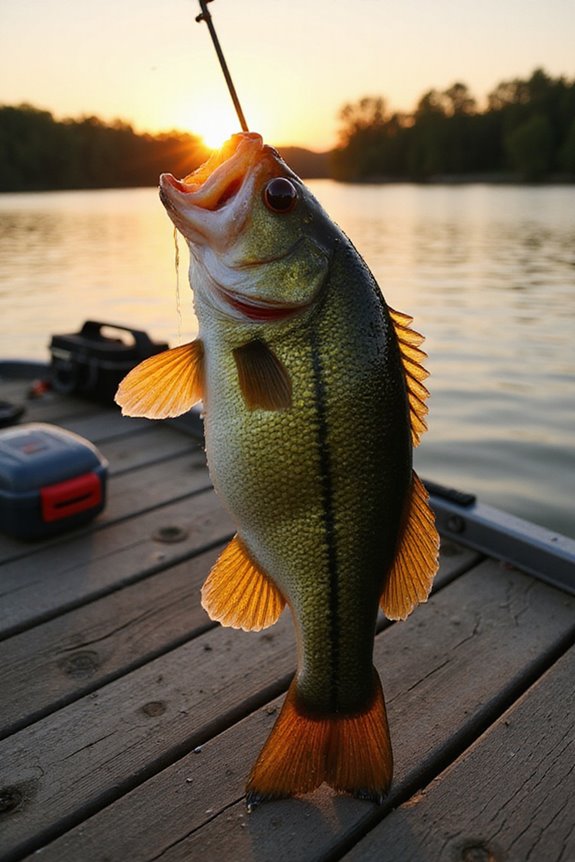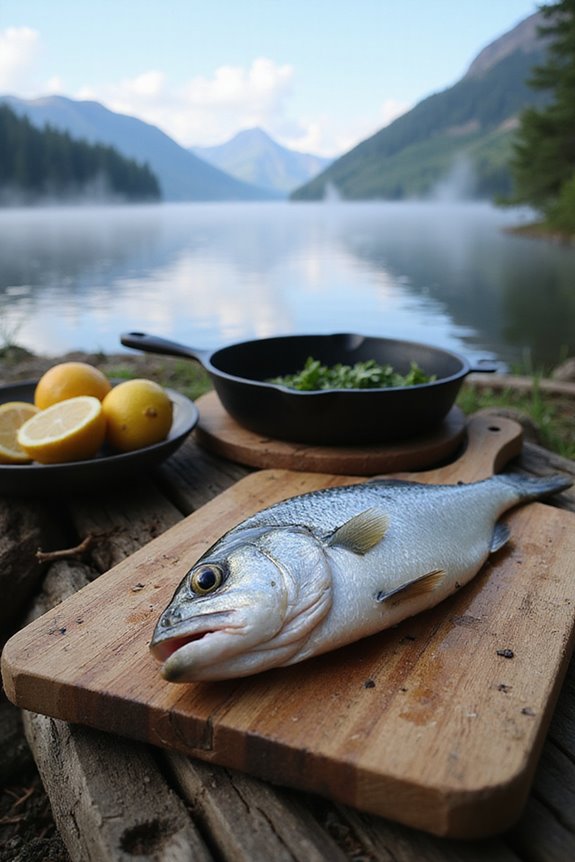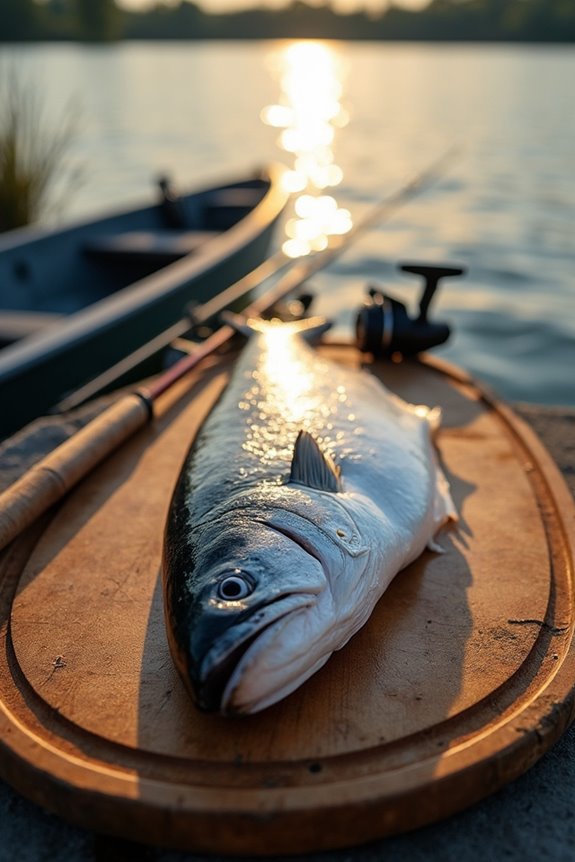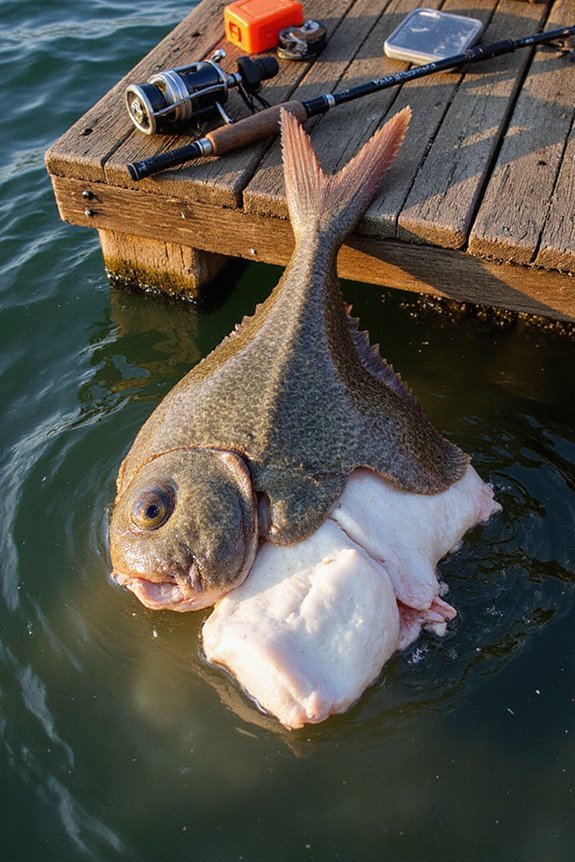Bass fish is a solid choice for both taste and nutrition. It offers about 124 calories per 3-ounce portion, delivering 16 to 20.6 grams of protein with minimal fat, making it great for muscle repair. The mild flavor appeals to many, and its firm yet flaky texture is satisfying. Bass is rich in omega-3 fatty acids, which support health in various ways. If you want to explore cooking methods and pairing options, there’s more to discover.
Key Takeaways
- Bass fish is low in calories and high in protein, making it a nutritious choice for muscle repair and overall health.
- It has a mild, slightly sweet flavor and a firm texture, making it versatile for various culinary applications.
- Rich in essential nutrients like omega-3 fatty acids and B vitamins, bass supports immune function and mental health.
- Bass is low in fat and contains healthy monounsaturated fats, promoting better cholesterol levels.
- Safety considerations include potential contaminants, so check local guidelines and limit intake, especially for sensitive populations.
Nutritional Profile of Bass Fish
When considering the nutritional profile of bass fish, it is essential to recognize its impressive macronutrient composition. A 3-ounce cooked serving offers about 124 calories, with protein content ranging from 16 to 20.6 grams, showcasing its protein benefits for muscle repair and maintenance. Bass is a low-fat fish, containing only 2.2 to 4 grams of fat per serving, and is completely free of carbohydrates. This nutritional analysis reveals that bass not only provides high-quality protein but also contains essential omega-3 fatty acids, supporting heart and brain health. Additionally, the presence of selenium and B vitamins enhances its overall health benefits, making bass a valuable addition to any diet. While many anglers focus on choosing the right fishing lure types to catch bass, the nutritional rewards of successfully landing these fish make the effort worthwhile.
Taste and Culinary Qualities

Although bass fish may appear unassuming, its culinary qualities reveal a delightful range of flavors and textures that appeal to many. Bass boasts a mild, slightly sweet flavor, carrying subtle flavor nuances that make it versatile for various cuisines. I find it less “fishy” than oily varieties, and its moderate fat content enhances the taste experience. The flesh is firm yet flaky, breaking apart easily, providing a satisfying texture contrast. When cooked, the skin crisps up beautifully, adding to the overall dish. I often prepare bass with Mediterranean ingredients like garlic and olive oil or grill it with herbs for a simple yet elegant meal. Its unique characteristics make bass a popular choice for both casual and fine dining. When fishing for bass, anglers often use soft plastic lures that mimic the natural prey bass typically feed on in their habitat.
Health Benefits Associated With Bass Fish
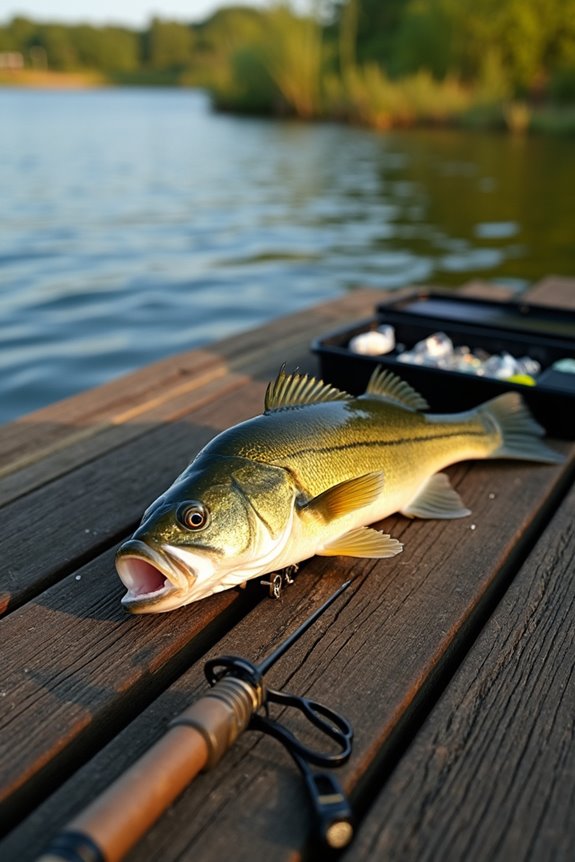
Bass fish offers a wealth of health benefits that appeal to both anglers and health-conscious eaters alike. For starters, it provides essential nutrients that support immune function. With vitamin B12 and omega-3 fatty acids, bass helps strengthen immune defenses while also modulating inflammation. Regular consumption may lower infection risks due to its nutrient profile.
Additionally, bass fish is linked to improved mental health. The omega-3 fatty acids help combat anxiety and depression, enhancing brain function and stabilizing mood. The protein and fatty acids contribute to reducing neuroinflammation, further supporting cognitive health. Incorporating bass into your diet not only satisfies your culinary cravings but also promotes overall well-being, making it a smart choice for both health and taste. Using a quality fluorocarbon line when fishing for bass ensures you can catch these nutritious fish effectively while maintaining their natural behavior since these lines are virtually invisible underwater.
Fat Content and Types in Bass Fish
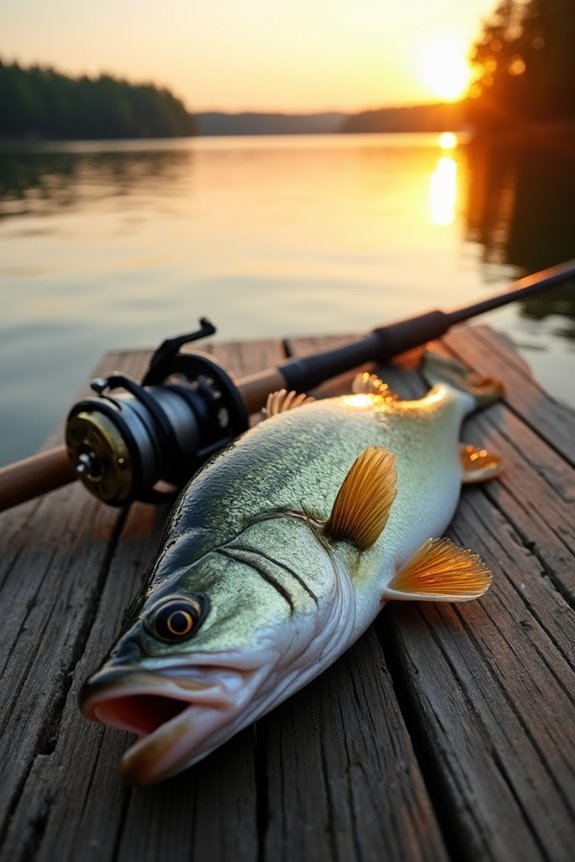
Understanding the fat content and types in bass fish is essential for making informed dietary choices. Bass exhibits fat variations, with freshwater bass containing about 3.1g of total fat per 3-ounce serving. This fish is particularly low in saturated fat, contributing just around 0.66g, making it a heart-healthy option. It also includes about 1.2g of monounsaturated fat, which supports better cholesterol levels. While the omega-3 benefits are modest, with polyunsaturated fats ranging from 0.9g to negligible amounts, they still contribute to the overall health profile. Bass fish provides a valuable balance of essential fatty acids, promoting a nutritious meal while keeping saturated fat low. Choosing bass can enhance your dietary variety and support your health goals.
Safety and Contaminant Levels
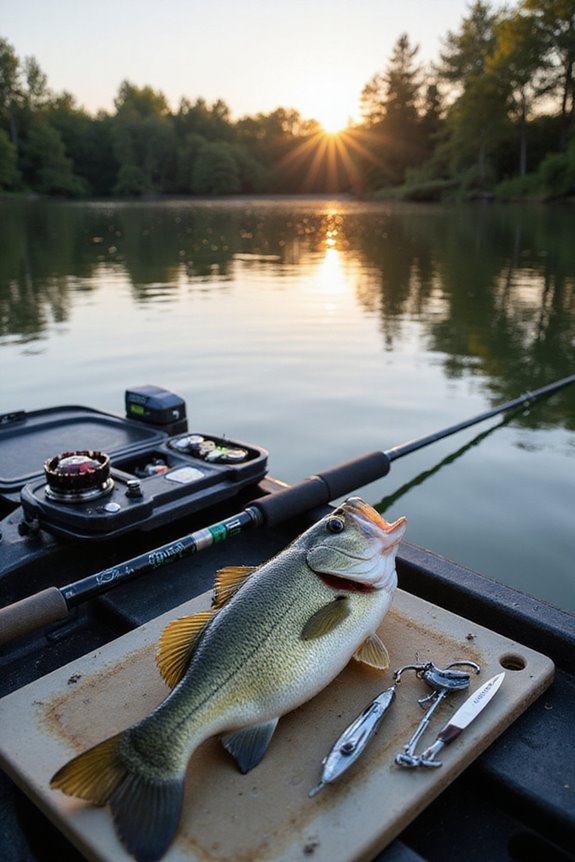
What should anglers know about the safety and contaminant levels in bass fish? Bass, particularly largemouth and striped bass, can accumulate contaminants like mercury and PCBs from their environment. Contaminant sources often include industrial runoff and urban pollution. It’s important to check local consumption guidelines, especially if you’re fishing in areas known for higher contaminant levels, like Coyote Creek or Oakland Harbor. Sensitive populations, such as pregnant women and children, should limit their intake due to health risks. Regular monitoring of these contaminants helps inform new consumption guidelines. If you’re targeting bass, be mindful of where you fish and stay updated on advisories to guarantee safe and enjoyable eating experiences.
Dietary Considerations
When considering dietary options, including bass fish in your meals can be a smart choice due to its nutritional benefits. Bass offers high-quality protein and essential omega-3 fatty acids, supporting heart and brain health. It’s low in mercury and carbohydrates, making it suitable for various diets, including low-carb and high-protein plans. Practicing portion control by serving about 3 ounces of cooked bass helps optimize nutrient intake without overloading on calories. Additionally, supporting sustainability practices when sourcing bass guarantees healthier fish populations, allowing us to enjoy this delicious option for years to come. Pair bass with nutrient-rich vegetables or whole grains for a balanced meal, enhancing your overall dietary quality while keeping health goals in check.
Cooking Methods for Bass Fish
Cooking bass fish can be a rewarding experience, especially with the variety of methods available to prepare this versatile catch. I often use pan frying techniques, which involve lightly dredging fillets in flour before frying them in butter or olive oil. Cooking for about 3-4 minutes on each side creates a golden crust while keeping the inside tender. For grilling tips, I preheat the grill to medium-high and oil the grates to prevent sticking. Grilling whole bass or thick fillets for 3-5 minutes per side enhances the smoky flavor. I like using a fish basket to simplify flipping and maintain the fish’s integrity. Each method brings out the unique flavors of bass, making it a delicious meal choice.
Serving Suggestions and Pairings
Serving bass fish can be a delightful experience, especially when you pair it with the right accompaniments. For a simple yet satisfying meal, I often serve grilled blackened bass over rice or crispy fries. If I’m in the mood for something fresh, I plate pan-fried sea bass on a bed of citrus-dressed broccoli. For a fun twist, I use bass fish recipes to make fish tacos, topped with crisp lettuce and a light mayo dressing. Flavor enhancements like lemon garlic herb butter or pineapple salsa add depth to the dish. Fresh herbs, citrus elements, and light grain sides, such as pearl couscous, create balanced meals that highlight the mild flavor of bass.
Frequently Asked Questions
Can Bass Fish Be Consumed Raw in Sushi or Sashimi?
Did you know that over 70% of freshwater fish carry parasites? I wouldn’t recommend consuming raw bass in sushi or sashimi due to safety concerns; proper preparation methods like cooking can mitigate these risks considerably.
How Does Bass Fish Compare to Other Fish in Taste?
When I think about bass flavor profile, it’s distinct yet versatile. Compared to other fish, its slightly oily texture enhances various culinary uses, making it a delicious choice for grilling, baking, or frying.
What Are the Best Side Dishes to Serve With Bass Fish?
When serving bass fish, I love pairing it with grilled vegetables and a drizzle of lemon butter. The vibrant flavors and textures enhance the dish, creating a delicious, balanced meal that’s always a hit!
Are There Any Allergies Associated With Eating Bass Fish?
Eating bass can be like walking a tightrope; one misstep and allergies may strike. I’ve learned that bass allergies and fish sensitivities can lead to serious reactions, making awareness and caution essential for safe enjoyment.
How Should Leftover Bass Fish Be Stored?
When I store leftover bass fish, I follow proper refrigeration techniques. I use airtight containers and consider freezing methods for longer storage. Keeping it cold prevents spoilage and helps maintain its freshness and quality.

